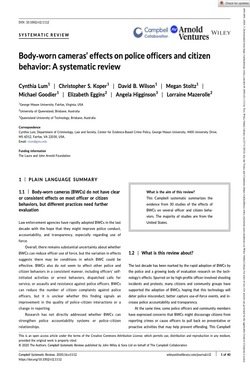By Cecilia Hansen Löfstrand, Christel Backman
This review paper critically examines the work environment implications of the use of body-worn camera (BWC) technology reported in research. We found that published peer-review studies (90 articles) pay very little attention to the work environment of BWC users – police officers. Departing from the notion of the two faces of surveillance and of BWC technology as a surveillance tool with uncertain implications – control or protection of officers – we critically examine how expectations in relation to BWC introduction and its implications have been addressed to explain why so little attention has been devoted to the topic. We found a dominant control rationale facilitating (rapid) BWC implementation at the expense of officers’ work environment, health and safety.
New Technology Work and Employment, Volume36, Issue3 November 2021 Pages 327-347













